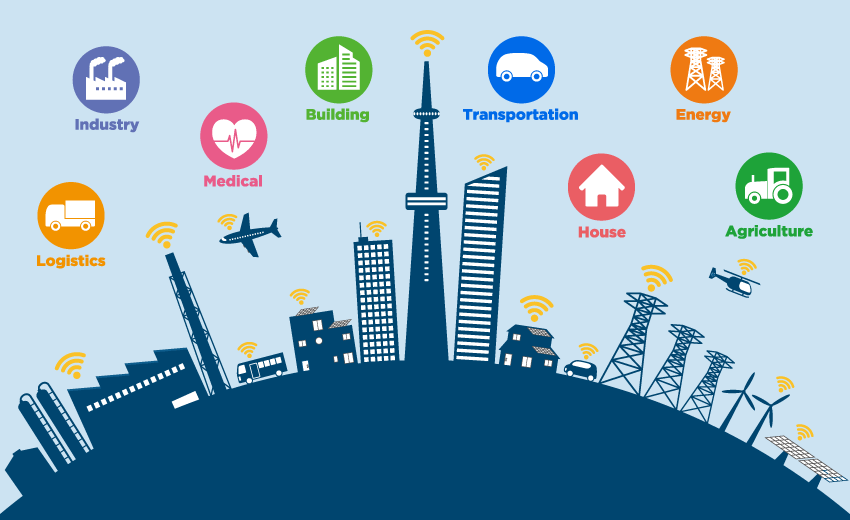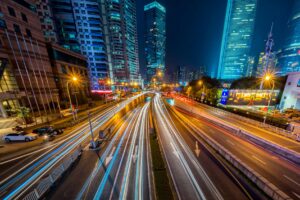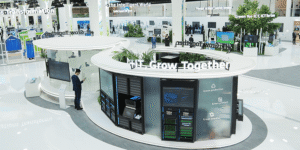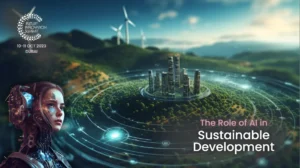Smart Cities and IoT Applications: Building the Future of Urban Living
Introduction
The concept of smart cities has rapidly evolved from futuristic imagination into a tangible reality, driven largely by the Internet of Things (IoT). As urbanization accelerates—over 68% of the world’s population is projected to live in cities by 2050—urban centers face unprecedented challenges in sustainability, resource management, public safety, and mobility. Smart city solutions powered by IoT provide innovative ways to tackle these issues while improving the quality of life for citizens.
This article explores the rise of smart cities, the role of IoT applications in transforming urban life, real-world use cases, technologies involved, challenges, and the future outlook.
What is a Smart City?
A smart city is an urban area that uses digital technologies—particularly IoT, artificial intelligence (AI), and big data analytics—to optimize infrastructure, resources, and services. The primary goal is to make cities more efficient, sustainable, and livable.
Key features of smart cities include:
-
Real-time monitoring of infrastructure, utilities, and transportation.
-
Data-driven decision-making for city planning and governance.
-
Automation of processes such as waste management, energy distribution, and traffic control.
-
Citizen-centric services such as digital health, smart education, and connected public spaces.
Role of IoT in Smart Cities
The Internet of Things (IoT) serves as the backbone of smart cities by connecting devices, sensors, and systems to collect and share data. IoT enables cities to monitor activities, detect problems, and implement real-time solutions.
IoT in smart cities works in three stages:
-
Sensing & Data Collection – Devices like smart meters, traffic sensors, and CCTV cameras capture real-time data.
-
Data Transmission – Information is transferred through 5G, LPWAN (Low Power Wide Area Network), or Wi-Fi.
-
Analysis & Action – AI and analytics convert raw data into actionable insights, allowing city authorities to act proactively.
IoT Applications in Smart Cities
1. Smart Transportation and Mobility
-
Traffic Management: IoT sensors monitor traffic flows, enabling adaptive traffic lights to reduce congestion.
-
Smart Parking: Sensors in parking spaces guide drivers to available spots, reducing time spent searching and cutting emissions.
-
Public Transport Optimization: GPS-enabled buses and trains provide real-time updates to passengers.
-
Autonomous Vehicles: Integration with IoT networks enhances safety and route efficiency.
Example: Barcelona has implemented smart traffic lights and parking systems, reducing congestion by 30%.
2. Smart Energy Management
-
Smart Grids: IoT enables dynamic electricity distribution based on demand, reducing blackouts.
-
Smart Meters: Provide households with real-time energy usage insights.
-
Renewable Energy Integration: IoT optimizes solar and wind energy distribution to reduce reliance on fossil fuels.
Example: Amsterdam’s smart grid initiative integrates IoT to balance energy loads and encourage renewable energy use.
3. Waste Management
-
Smart Bins: IoT-enabled bins notify waste collection teams when they are full.
-
Route Optimization: AI algorithms map the most efficient collection routes.
-
Recycling Monitoring: Sensors detect non-recyclable materials in bins.
Example: Singapore uses IoT-based waste management to cut down operational costs and increase recycling rates.
4. Smart Water Management
-
Leak Detection: IoT sensors identify leaks in pipelines to reduce water loss.
-
Water Quality Monitoring: Real-time data ensures safe drinking water supply.
-
Smart Irrigation: Agricultural areas within cities use IoT to manage water usage efficiently.
Example: Dubai uses IoT water management systems to track water supply and prevent wastage.
5. Smart Healthcare
-
Telemedicine Platforms: IoT devices enable remote consultations.
-
Wearable Devices: Track citizen health metrics (heart rate, glucose levels) and send data to healthcare providers.
-
Smart Ambulances: Equipped with IoT tools to connect directly with hospitals en route.
Example: Seoul, South Korea, integrates wearable IoT health monitors into its public healthcare system.
6. Smart Buildings and Infrastructure
-
Automated Energy Systems: Buildings adjust lighting, heating, and cooling based on occupancy.
-
IoT-enabled Security: Facial recognition and smart locks improve safety.
-
Structural Health Monitoring: Sensors detect cracks or stress in bridges and buildings.
Example: Songdo, South Korea, is a fully connected smart city with IoT-enabled infrastructure and energy-efficient buildings.
7. Smart Governance and E-Government
-
Digital Citizen Services: Online portals for taxes, permits, and services.
-
IoT-driven Policy Making: Data helps governments respond to urban challenges quickly.
-
Blockchain-based Governance: Transparent and tamper-proof citizen services.
Example: Tallinn, Estonia, uses IoT and blockchain for e-residency, e-health, and digital voting.
8. Smart Security and Public Safety
-
Surveillance Systems: IoT-powered CCTV with AI detects unusual activities.
-
Disaster Management: Sensors monitor earthquakes, floods, and fires in real time.
-
Predictive Policing: Data-driven insights help prevent crimes.
Example: Chicago uses IoT-based predictive policing to analyze crime hotspots and optimize patrolling.
9. Smart Retail and Commerce
-
Connected Stores: Smart shelves update inventory in real-time.
-
Personalized Shopping: IoT beacons push personalized offers to smartphones.
-
Cashless Transactions: IoT-enabled kiosks and mobile payments speed up commerce.
Example: Amazon Go stores use IoT sensors and cameras for checkout-free shopping.
10. Smart Education
-
IoT-enabled Classrooms: Interactive boards and smart devices enhance teaching.
-
Attendance Tracking: IoT wearables track student presence.
-
Remote Learning: IoT supports hybrid classrooms.
Example: India’s digital classrooms initiative integrates IoT devices to improve rural education accessibility.
Technologies Driving IoT in Smart Cities
-
5G and Edge Computing – Ensure low-latency and real-time data processing.
-
Artificial Intelligence (AI) and Machine Learning – Analyze massive datasets for predictive insights.
-
Cloud Computing – Provides scalable infrastructure for storing and analyzing city-wide data.
-
Blockchain – Ensures secure and transparent data sharing.
-
LPWAN (LoRa, NB-IoT) – Low-power connectivity for IoT sensors in large-scale deployments.
Benefits of IoT in Smart Cities
-
Efficiency: Reduces energy waste, traffic jams, and operational costs.
-
Sustainability: Promotes renewable energy and smart resource management.
-
Safety: Enhances disaster response and public security.
-
Economic Growth: Attracts investments and fosters tech startups.
-
Improved Quality of Life: Citizens enjoy better healthcare, education, and urban services.
Challenges of IoT in Smart Cities
-
Data Privacy and Security: Risks of cyberattacks and surveillance abuse.
-
High Costs: Large-scale IoT deployment requires heavy investment.
-
Interoperability Issues: Different IoT devices may not integrate seamlessly.
-
Digital Divide: Not all citizens have equal access to smart services.
-
Regulatory Concerns: Lack of global standards for smart cities.
Case Studies of IoT-Powered Smart Cities
-
Barcelona, Spain – Smart lighting, traffic control, and waste management.
-
Singapore – Nation-wide IoT deployment for smart transportation and healthcare.
-
Dubai, UAE – Smart Dubai initiative with IoT-driven governance and blockchain services.
-
Songdo, South Korea – First city built entirely as a smart city with IoT-driven infrastructure.
-
New York City, USA – IoT-enabled water meters and smart energy solutions.
Future of IoT in Smart Cities
The next decade will see smart cities evolving into hyperconnected ecosystems where IoT, AI, blockchain, and robotics converge. Key trends include:
-
Autonomous Mobility Networks with self-driving cars and drones.
-
Green IoT solutions to achieve net-zero emissions.
-
Digital Twins of cities for real-time urban planning.
-
Citizen-driven Smart Governance using participatory IoT platforms.
-
AI-powered Predictive Cities that solve issues before they occur.
By 2035, the global smart city market is projected to exceed $2.5 trillion, with IoT at its core.
Final Thoughts
Smart cities powered by IoT are not just a technological trend—they represent the future of human civilization. By combining connectivity, intelligence, and sustainability, IoT applications can turn urban challenges into opportunities for growth, efficiency, and inclusivity.
While challenges remain in terms of cost, security, and regulation, the benefits far outweigh the risks. Governments, private enterprises, and citizens must collaborate to shape cities that are not only smart but also human-centric. The journey to fully connected cities is still unfolding, but one thing is clear—IoT will be the lifeblood of future urban living.
https://bitsofall.com/finance-and-market-prediction-science-strategies-future/
The Role of Machine Learning in Enhancing Cloud-Native Container Security







